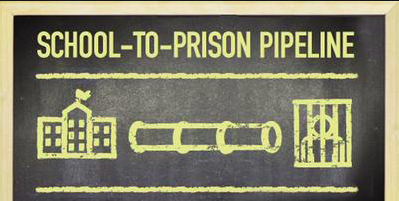A Synthesis of the Grassroots Organizing in New York City and Nationally in Response to the School-to-Prison Pipeline
The School-to-Prison Pipeline mainly targets minority students like youth of color, those with disabilities, LGBTQ youth and those who are economically disadvantaged. The organization of these groups varied from youth who took it upon themselves to make a change to communities as a whole who strive for justice.
One example of a group of youth who are working towards change is the Urban Youth Collective in New York City. This group was formed in 2004 by a group of students who were angry about the radical top-down reform in which students were kept out of the decision making process. Since then, this grassroots organization works for reform on a multitude of issues, including the School-to-Prison Pipeline in which they push for the implementation of restorative justice approaches to discipline.
Other groups like the Black Organizing Project use their community as a tool to work for racial, social and economic justice through grassroots organizing in Oakland California. They strive to create power from the bottom-up so that the policies within the community are reflective of the needs of its members. One of their missions known as BOSS, Bettering our School Systems, also works toward implementation of restorative justice approaches that do not rely on police involvement.
Organizations like these are present across the nation, working towards breaking the cycle of inequality and giving every student the right to a safe environment for school. Their work has moved the nation in the right direction but the fight is far from over.
The obstacles are the same for all of these groups. The problem is not the teachers, but rather the administration. For those involved, there have been steps in the right direction. On their own, without specific legislation, educators have “reduced out of school suspensions by 20 percent” by implementing alternative and restorative approaches to punishment (Lowery and Stone, 2017). However, in order for the cycle to truly be broken, the government must implement legislation and provide proper funding to educate faculty on alternatives to zero tolerance policies and training on implicit bias. Until administrators assert their power for the good of this issue, it is hard for the movement to make strides.
